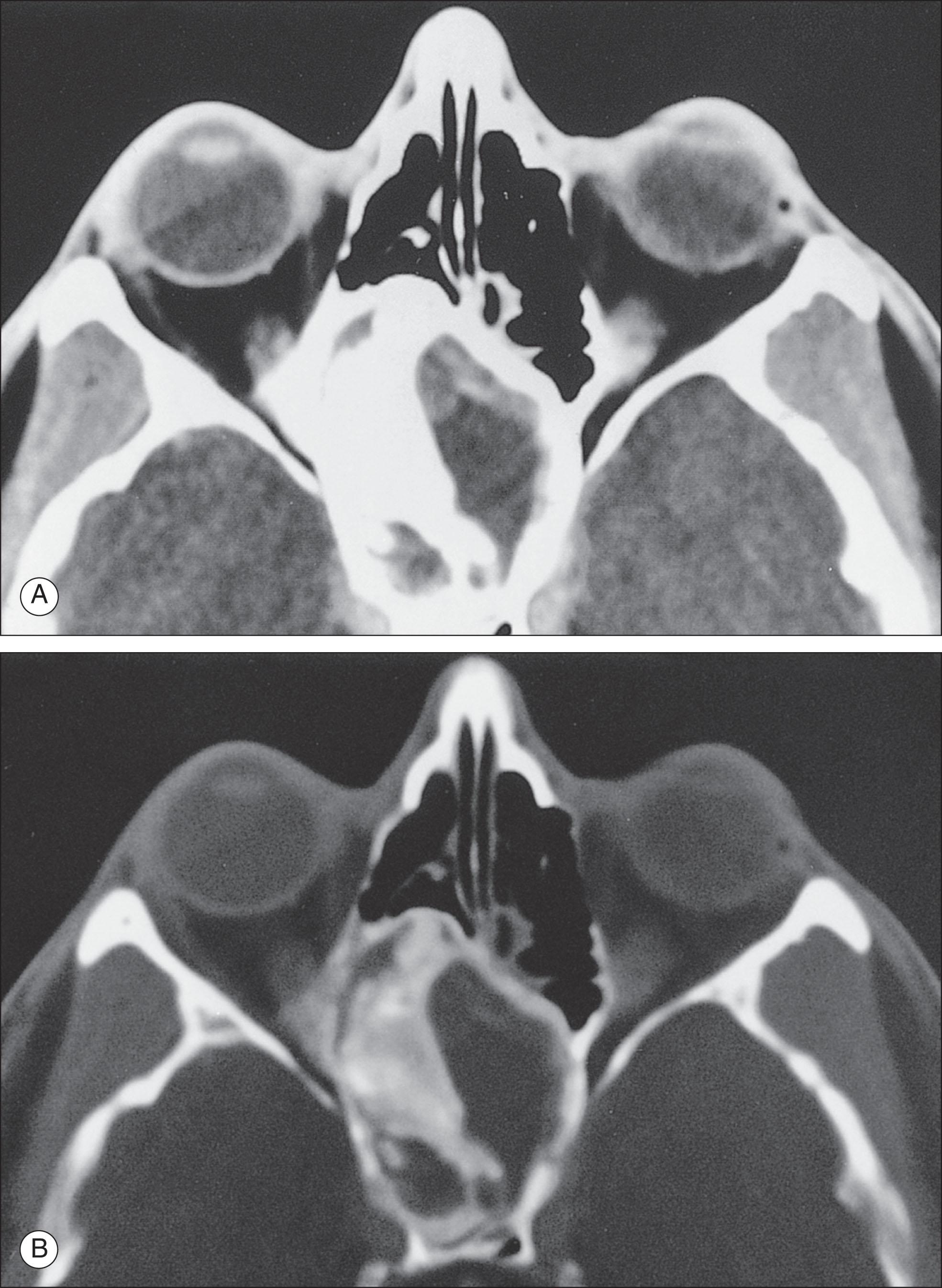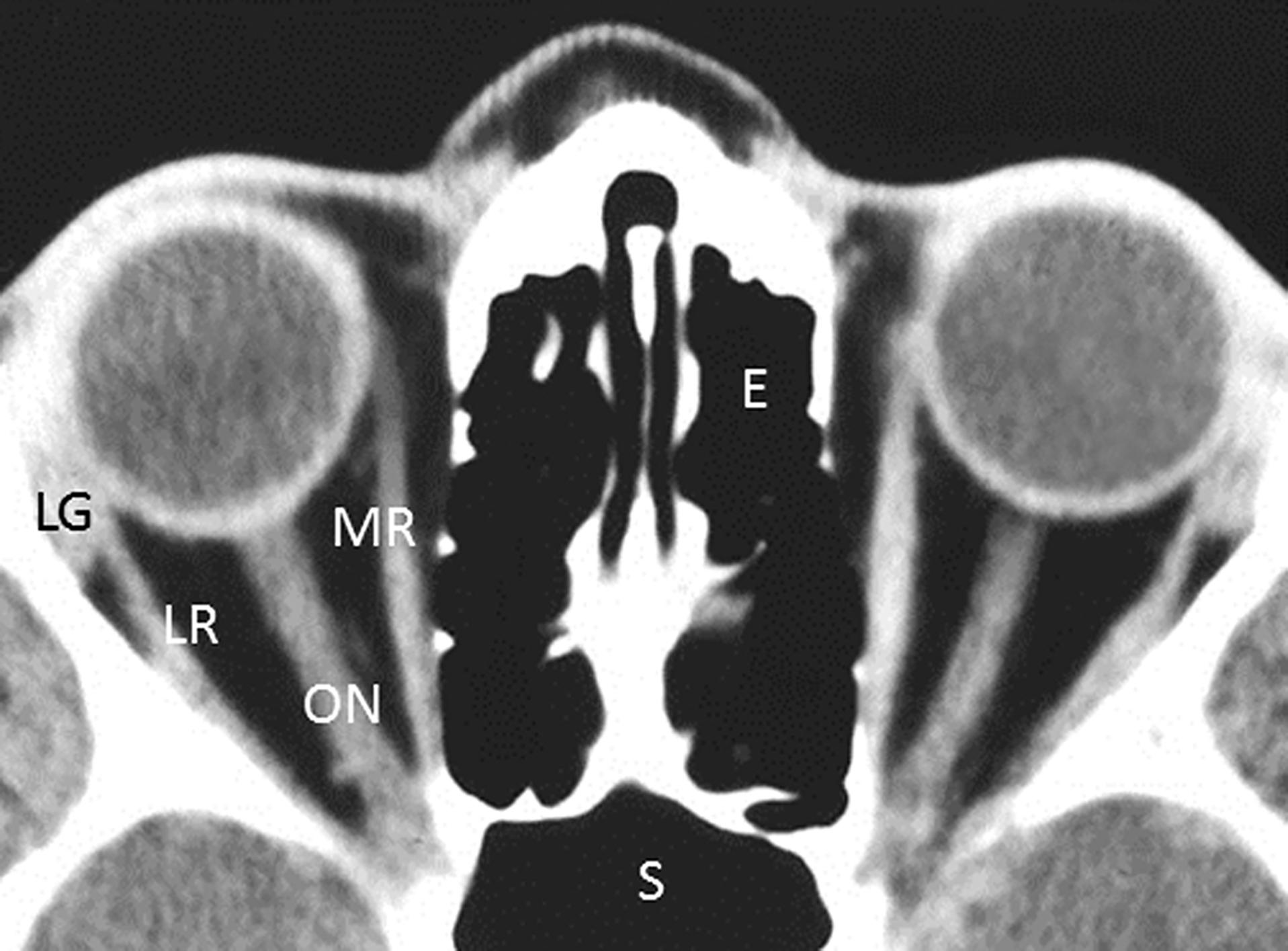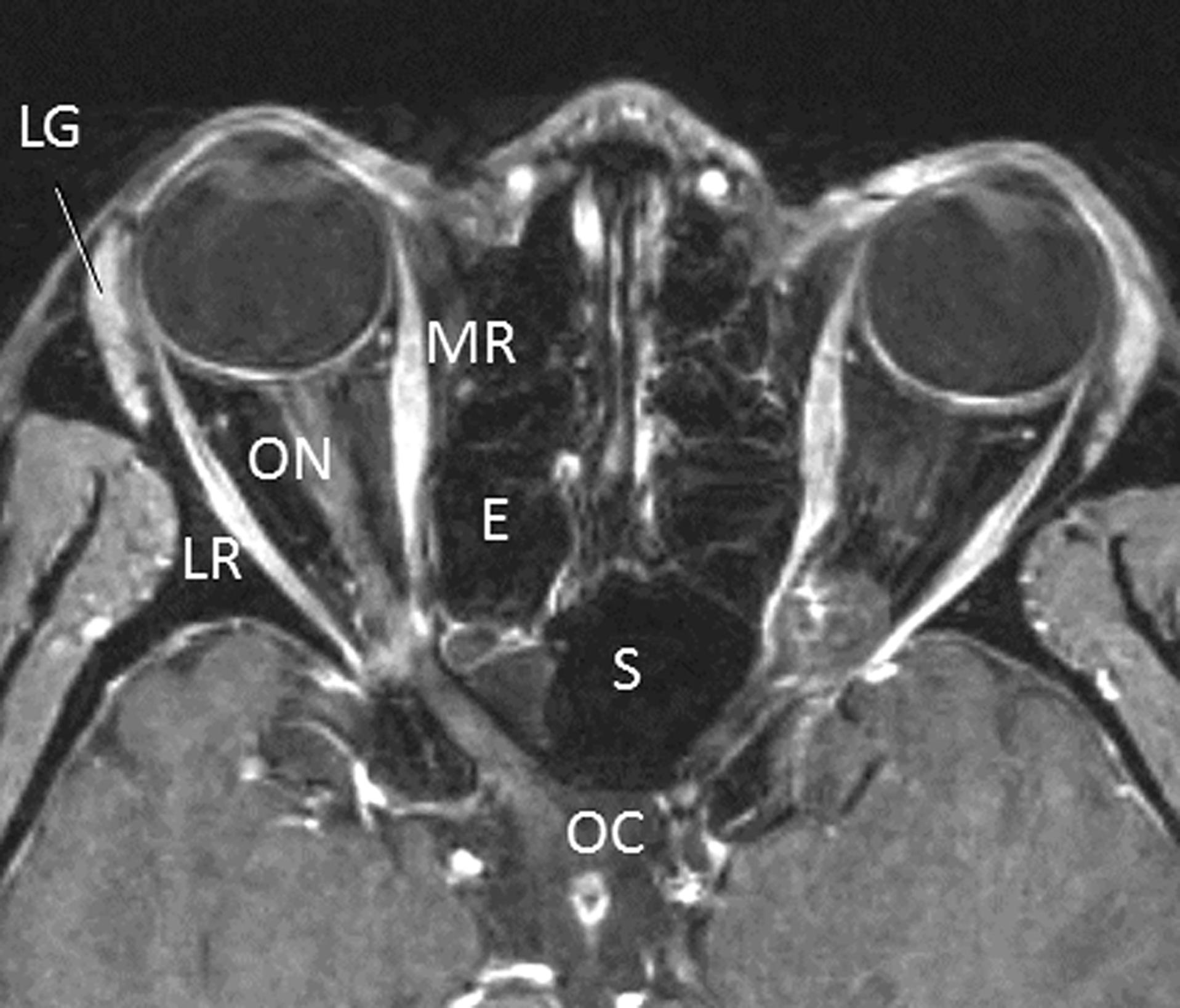Physical Address
304 North Cardinal St.
Dorchester Center, MA 02124
Computed tomography: An imaging technique where contrast differences are based on tissue density based on the passage of X-rays through tissues.
Magnetic resonance imaging: An imaging technique where density differences are based on tissue proton density and their resonance characteristics determined by their biochemical relationships within the atomic lattice.
Orbital pathological processes often have characteristic features that can help narrow the diagnostic possibilities when considered in combination with the clinical findings.
Orbital CT is the imaging procedure of choice for evaluation of bony detail.
Magnetic resonance imaging has become the most important technique for most orbital lesions, for the optic nerve, and for the orbital apex, where it can distinguish tissues based on their biochemical differences.
Orbital pathology often presents a challenge in making an accurate diagnosis. Radiographic examination is an essential step in the evaluation of all patients who have suspected orbital disease, and it can help narrow the differential diagnosis. Although imaging can contribute significant information, pertinent clinical input is necessary for adequate radiographic interpretation. Imaging patterns and features can often point to specific diagnostic possibilities compared with expected normal anatomy. Orbital imaging also may help the physician plan the most appropriate medical therapy or surgical approach. Computed tomography (CT) and magnetic resonance imaging (MRI) have largely replaced older techniques ( Fig. 12.3.1 ). MRI in particular has proven valuable in delineating orbital structures, including blood vessels, nerves, and connective tissue septae.

The axial plane is horizontal through the orbit, perpendicular to the cephalocaudal axis of the body. The orbital floor appears as a thin, oblique density that runs from anteromedial to posterolateral, separating the orbit from the maxillary sinus. Because the floor gradually slopes backward and upward, successively higher cross-sections are cut in axial scan sequences. The orbital cavity is bounded medially by the anterior lacrimal crest and laterally by the lateral rim of the zygomatic bone. Posterior to the orbit is the cranial base. A thin line arches across the orbital opening from the medial to the lateral bony rims; this represents the lower eyelid and orbital septum.
Depending on the level of the cut, the orbital cavity may appear empty (because it contains only orbital fat), or it may contain a rounded density that represents the sclera cut tangentially. Occasionally the inferior oblique muscle is seen as an oblique band of medium-density tissue, and in slightly higher sections, the inferior rectus muscle may appear as a density adjacent to the globe posteriorly.
In low axial sections through the inferior orbit, the floor again appears as a thin density that separates the orbital cavity from the maxillary sinus. In the posterolateral corner of the orbit, where the floor approaches the lateral wall, a channel separates the body of the sphenoid bone from the greater wing. This is the inferior orbital fissure. Posteriorly, behind the inferior rectus muscle, this fissure communicates between the orbital space and the pterygopalatine fossa. In the anteromedial corner of the orbit, the lacrimal sac fossa is seen as a depression in the orbital process of the maxillary bone.
Within the orbital space, a central, rounded density represents the globe. Because the vitreous is primarily aqueous, it appears empty (black) on CT. On MRI scans, the vitreous appears dark on T1-weighted sequences and bright on T2-weighted sequences. Just posterior to the globe is a rounded density that lies on the midportion of the orbital floor and is discontinuous with the globe. This is the inferior rectus muscle cut in cross-section.
On axial scans through the midorbit, the globe is seen in equatorial section ( Figs. 12.3.2 and 12.3.3 ). Anteriorly, the lens is seen as an oval density. On MRI sections, the ciliary body can be distinguished on either side of the lens. Behind the globe, the optic nerve is seen to emerge from the posterior sclera and run toward the orbital apex.


In the midorbit, a gently curved enhancing line crosses the orbit from lateral to medial. This is the superior ophthalmic vein. Near the orbital apex, a small enhancing vessel is seen to cross over the optic nerve from lateral to medial. This is the second portion of the ophthalmic artery. Along the orbital walls are the lateral and medial rectus muscles. At slightly higher levels, both the medial rectus and superior oblique muscles are often seen together. On either side of the midline are the ethmoid sinuses, with the thin lamina papyracea that forms the medial orbital wall. Just medial to the laminae are the ethmoid air cells.
At this level, the orbital contour is narrower and terminates posteriorly in a rounded angle above the level of the optic canals. Within the orbital outline, the globe is represented in cross-section above the level of the lens. Along the medial wall is the superior oblique muscle that passes through the trochlea anteromedially. Near the orbital apex, the superior rectus muscle appears as a broad band of tissue directed toward the globe. The superior ophthalmic vein is seen as a curvilinear enhancing structure that crosses from anteromedial to posterolateral just below the muscle. Anterolaterally, near the lateral orbital rim, the lacrimal gland appears as an oval density seen between the zygomatic bone and the globe.
In axial sections above the level of the globe, the orbit appears as a rounded contour posteriorly. Because the roof lies in a plane oblique to the tissue slice, in each higher section, the roof lies progressively more anteriorly as it approaches the orbital rim. The levator muscle is seen as a broad band that extends from the superior orbital rim backward along the roof. Anteromedially, the trochlea is seen clearly, and at appropriate levels, the superior oblique tendon can be visualized as it fans out over the superior globe below the superior rectus muscle insertion.
Become a Clinical Tree membership for Full access and enjoy Unlimited articles
If you are a member. Log in here